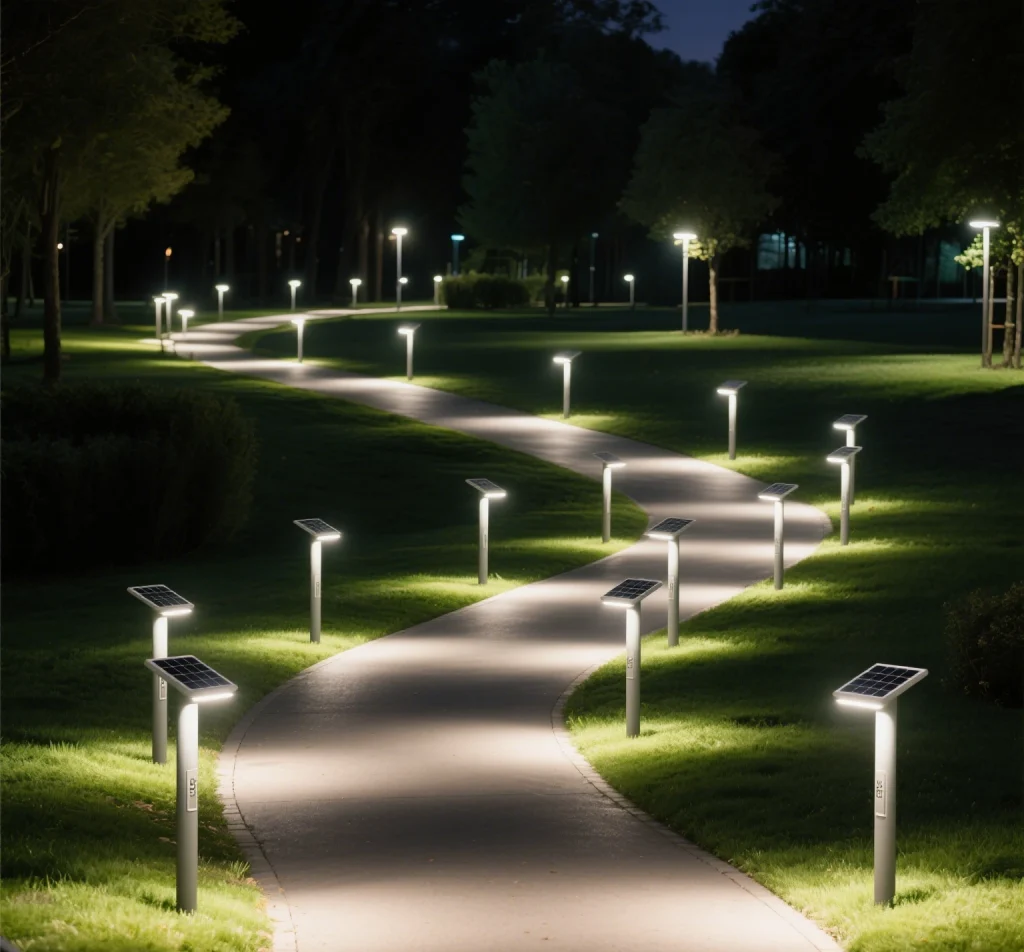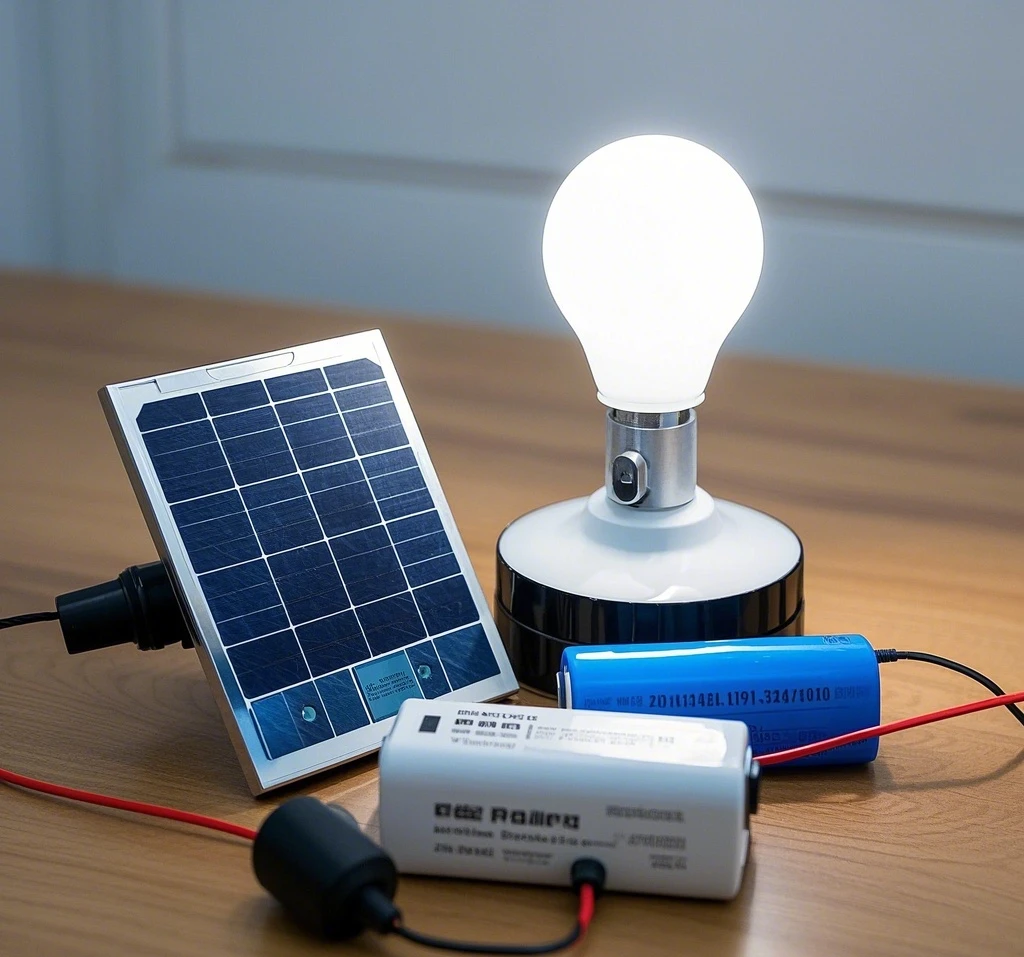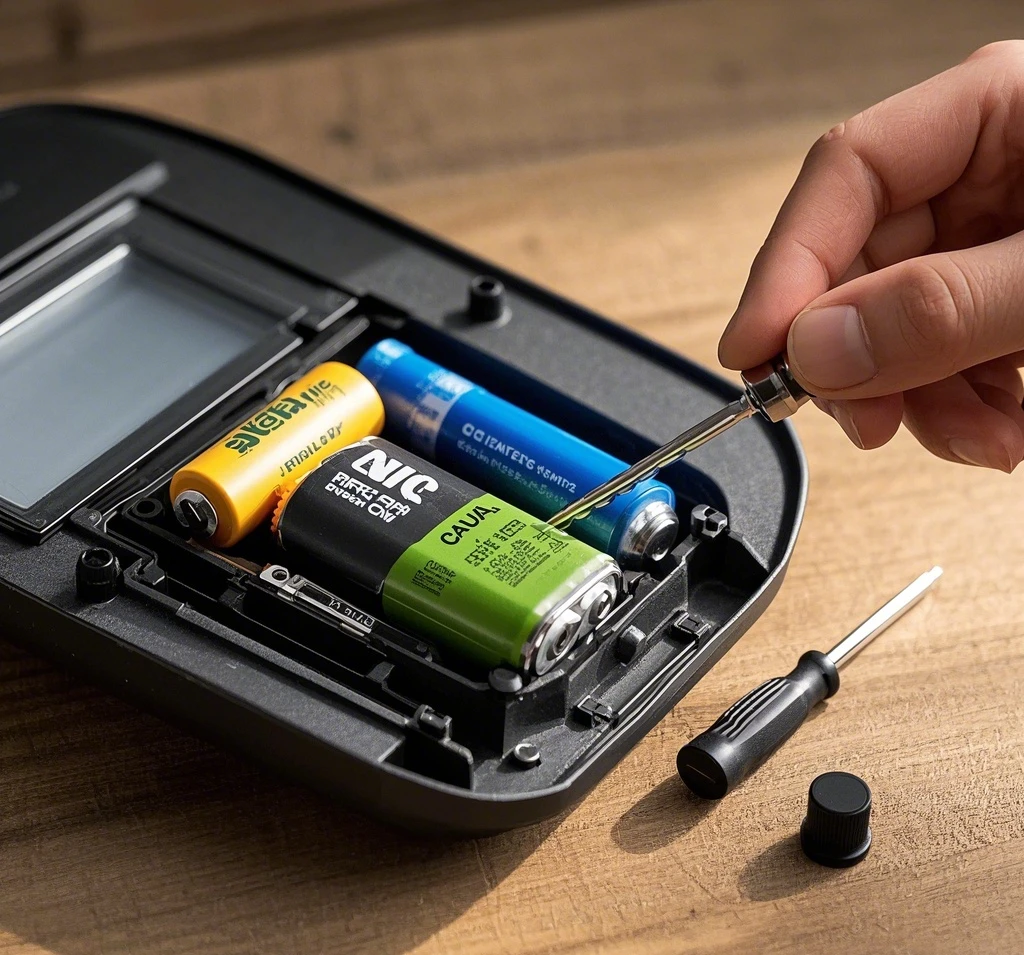Solar panels are celebrated for their ability to harness sunlight and convert it into clean, renewable energy, powering everything from solar outdoor lights to entire homes. A common question among enthusiasts and homeowners is whether you can charge a solar panel with a light bulb instead of natural sunlight. This query often arises when sunlight is limited, such as during cloudy days, winter months, or indoor testing scenarios. In this comprehensive guide, we’ll explore the feasibility of using a light bulb to charge a solar panel, delve into the science behind it, and provide practical advice for optimizing your solar energy system.

How Solar Panels Work
To understand whether a light bulb can charge a solar panel, it’s essential to grasp the basics of how solar panels function. Solar panels, or photovoltaic (PV) cells, convert light energy into electricity through the photovoltaic effect. When photons from light strike the panel’s surface, they excite electrons in the semiconductor material (typically silicon), generating an electric current. This process is most efficient with sunlight, which provides a broad spectrum of light, including ultraviolet (UV), visible, and infrared wavelengths.
Solar garden lights, solar flood lights, and other solar powered devices rely on this technology to charge internal batteries during the day for nighttime use. The efficiency of a solar panel depends on the intensity, spectrum, and angle of the incoming light, which raises the question: can artificial light, such as that from a light bulb, replicate these conditions?
Can a Light Bulb Charge a Solar Panel?
The short answer is yes, you can charge a solar panel with artificial light, including light bulbs, but the effectiveness depends on several factors. Unlike sunlight, which delivers approximately 1000 watts per square meter at peak intensity, light bulbs produce significantly less power and a narrower spectrum. Here’s a breakdown of how different types of light bulbs perform when used to charge a solar panel:
1. Incandescent Bulbs
Incandescent bulbs emit light by heating a filament, producing a warm, broad-spectrum light that includes some infrared wavelengths. However, they are highly inefficient, converting only about 10% of their energy into light, with the rest lost as heat. A 100-watt incandescent bulb placed close to a small solar panel for outdoor lights (e.g., 5 watts) might generate a minimal charge, but the output is typically less than 1% of the panel’s rated capacity due to low light intensity and spectral mismatch.
2. LED Bulbs
LED solar lights are increasingly popular, and LED bulbs are often considered for charging panels due to their energy efficiency. LEDs emit light in a narrow spectrum, typically lacking the full range of wavelengths needed for optimal photovoltaic performance. A high-powered LED bulb (e.g., 800 lumens) can produce a small charge, especially if it mimics daylight (5000-6500K color temperature). However, the charge rate is still significantly lower than sunlight, often requiring hours to achieve minimal battery storage.
3. Halogen Bulbs
Halogen bulbs are similar to incandescent bulbs but operate at higher temperatures, producing brighter and slightly more efficient light. They emit a broader spectrum closer to sunlight, making them somewhat more effective for charging solar panels for home use. For instance, a 500-watt halogen work light positioned 6-12 inches from a panel can generate a measurable charge, though still far less efficient than natural sunlight.
4. Fluorescent Bulbs
Fluorescent bulbs, including compact fluorescent lamps (CFLs), emit light through gas excitation, producing a spectrum with peaks in certain wavelengths. They can charge a solar panel to a limited extent, but their output is generally insufficient for practical use unless paired with a high-wattage setup and close proximity to the panel.
Factors Affecting Charging Efficiency
Several variables determine how effectively a light bulb can charge a solar energy system:
- Light Intensity: Measured in lumens or lux, the brightness of the bulb is critical. Sunlight provides around 10,000-100,000 lux, while a typical household bulb offers 500-2000 lumens, equivalent to 500-2000 lux at close range.
- Spectral Match: Solar panels are optimized for sunlight’s broad spectrum (300-1100 nm). Most bulbs lack sufficient UV or infrared light, reducing efficiency.
- Distance: The closer the bulb is to the panel, the higher the light intensity. However, placing a bulb too close risks overheating the panel, which can reduce efficiency or cause damage.
- Panel Size and Type: Smaller panels, like those in solar pathway lights, are easier to charge with artificial light due to lower power requirements. Larger panels, such as those in solar panels for home use, demand significantly more light intensity.
- Angle of Incidence: Light should strike the panel perpendicularly for maximum absorption. Adjust the bulb’s position to optimize this angle.
A user on a Bitpott renewable energy thread reported charging a 2-watt solar garden light panel using a 1000-lumen LED bulb placed 6 inches away, achieving a partial charge after 4 hours, though the battery was only 20% full.

Practical Steps to Charge a Solar Panel with a Light Bulb
If you need to charge a solar panel with artificial light, such as for testing or in low-sunlight conditions, follow these steps:
- Choose the Right Bulb: Select a high-powered LED or halogen bulb with a color temperature of 5000-6500K to mimic daylight. A 500-watt halogen or 1000-lumen LED is a good starting point.
- Position the Bulb: Place the bulb 6-12 inches from the panel, ensuring the light covers the entire surface. Use a reflector or lampshade to focus the light if possible.
- Optimize the Angle: Tilt the panel to face the bulb directly, maximizing light absorption.
- Monitor Charging: Use a multimeter to measure the panel’s output voltage and current. For example, a 5-watt panel should produce around 5-6 volts under ideal conditions.
- Avoid Overheating: Ensure adequate ventilation to prevent the panel or bulb from overheating, which can reduce efficiency or cause damage.
- Charge in Short Bursts: Run the bulb for 2-4 hours, checking the battery periodically. Most solar powered devices require 6-8 hours of sunlight, so expect longer charging times with a bulb.
Limitations and Challenges
While it’s possible to charge a solar panel with a light bulb, there are significant limitations:
- Low Efficiency: Even the best artificial light setups achieve only 5-20% of a panel’s rated output compared to sunlight. For example, a 10-watt panel might produce just 0.5-2 watts under a bulb.
- Energy Cost: Running a high-powered bulb consumes electricity, often negating the energy savings of solar power. A 500-watt halogen bulb used for 4 hours consumes 2 kWh, which may cost more than the energy generated.
- Spectral Mismatch: Most bulbs lack the full spectrum of sunlight, particularly UV and infrared, limiting the photovoltaic effect.
- Practicality: For large panels or solar panels for home use, the power required to run a sufficiently bright bulb makes this method impractical.
Alternative Solutions for Low-Sunlight Conditions
If sunlight is unavailable and artificial light proves inefficient, consider these alternatives to keep your solar outdoor lights or devices powered:
- Battery Backup: Use a portable power bank to charge the device’s battery directly, bypassing the solar panel.
- Indoor Charging Stations: Some manufacturers offer indoor charging docks for solar garden lights, using specialized UV lamps designed for solar panels.
- Hybrid Solar Lights: Invest in hybrid solar powered devices that can switch to grid power when solar charging is insufficient.
- Solar Panel Covers: In cloudy conditions, use a clear protective cover to maximize available sunlight and prevent debris buildup.
Environmental and Practical Considerations
Attempting to charge a solar panel with artificial light is rarely energy-efficient or cost-effective for daily use. The electricity consumed by a high-powered bulb often exceeds the energy generated by the panel, undermining the eco-friendly benefits of solar power. However, this method can be useful for testing solar panels in controlled environments, such as during product development or troubleshooting. For instance, engineers on a renewable energy forum noted using halogen lamps to test solar pathway lights indoors, ensuring functionality before outdoor installation.
For sustainable operation, prioritize natural sunlight and optimize panel placement to capture maximum daylight. Regular maintenance, such as cleaning panels to remove dust or snow, can also enhance efficiency in low-light conditions.
Conclusion
While you can technically charge a solar panel with a light bulb, the process is inefficient and impractical for most applications due to low light intensity, spectral mismatch, and high energy costs. For small solar outdoor lights, a high-powered LED or halogen bulb can provide a minimal charge for testing or emergency use, but it’s no substitute for sunlight. By understanding the science behind solar panels and experimenting with artificial light setups, you can troubleshoot and maintain your solar energy system effectively. For optimal performance, focus on maximizing sunlight exposure and exploring alternative charging solutions when sunlight is scarce. With these insights, you can keep your solar powered devices running smoothly, even in challenging conditions.

Comments